
Sophia of Hanover was the Electress of Hanover by marriage to Elector Ernest Augustus and later the heiress presumptive to the thrones of England and Scotland and Ireland under the Act of Settlement 1701, as a granddaughter of James VI and I. Princess Sophia died less than two months before she would have become Queen of Great Britain and Ireland. Consequently, her son George I, succeeded her first cousin once removed, Queen Anne, to the British throne, and the succession to the throne has since been defined as, and composed entirely of, her legitimate and Protestant descendants.

The House of Hanover, whose members are known as Hanoverians, is a European royal house of German origin that ruled Hanover, Great Britain, and Ireland at various times during the 17th to 20th centuries. The house originated in 1635 as a cadet branch of the House of Brunswick-Lüneburg, growing in prestige until Hanover became an Electorate in 1692. George I became the first Hanoverian monarch of Great Britain and Ireland in 1714. At Queen Victoria's death in 1901, the throne of the United Kingdom passed to her eldest son Edward VII, a member of the House of Saxe-Coburg and Gotha. The last reigning members of the House of Hanover lost the Duchy of Brunswick in 1918 when Germany became a republic.

Charlotte of Mecklenburg-Strelitz was Queen of Great Britain and Ireland as the wife of King George III from their marriage on 8 September 1761 until her death in 1818. Both kingdoms were in a personal union under George until the Acts of Union 1800 merged them on 1 January 1801. Charlotte then became Queen of the United Kingdom of Great Britain and Ireland. As George's wife, she was also Electress of Brunswick-Lüneburg (Hanover) until becoming Queen of Hanover on 12 October 1814. Charlotte was Britain's longest-serving queen consort, serving for 57 years and 70 days.

Ernest Augustus was King of Hanover from 20 June 1837 until his death in 1851. As the fifth son of King George III of the United Kingdom and Hanover, he initially seemed unlikely to become a monarch, but none of his elder brothers had a legitimate son. When his older brother William IV, who ruled both kingdoms, died in 1837, his niece Victoria inherited the British throne under British succession law, while Ernest succeeded in Hanover under Salic law, which barred women from the succession, thus ending the personal union between Britain and Hanover that had begun in 1714.
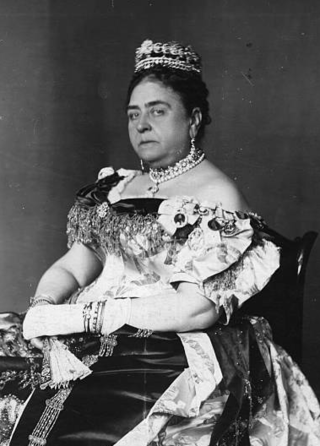
Princess Mary Adelaide of Cambridge, later known as the Duchess of Teck, was a member of the British royal family. She was one of the first royals to patronise a wide range of charities and was a first cousin of Queen Victoria.

Prince Adolphus, Duke of Cambridge, was the tenth child and seventh son of King George III and Queen Charlotte of the United Kingdom. He held the title of Duke of Cambridge from 1801 until his death. He also served as Viceroy of Hanover on behalf of his brothers George IV and William IV.

The House of Welf is a European dynasty that has included many German and British monarchs from the 11th to 20th century and Emperor Ivan VI of Russia in the 18th century. The originally Franconian family from the Meuse-Moselle area was closely related to the imperial family of the Carolingians.

George V was the last King of Hanover, the only child and successor of King Ernest Augustus. George V's reign was ended by the Austro-Prussian War, after which Prussia annexed Hanover.
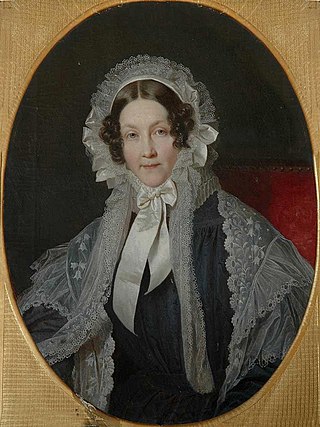
Frederica of Mecklenburg-Strelitz was Queen of Hanover from 20 June 1837 until her death in 1841 as the wife of King Ernest Augustus. She was a German princess who married successively Prince Louis Charles of Prussia, Prince Frederick William of Solms-Braunfels, and her first cousin Ernest Augustus. Through her 1815 marriage to Ernest Augustus, then Duke of Cumberland, Frederica became a British princess and Duchess of Cumberland. Ernest Augustus was the fifth son and eighth child of Queen Charlotte and King George III of the United Kingdom, Frederica's paternal aunt and her husband.
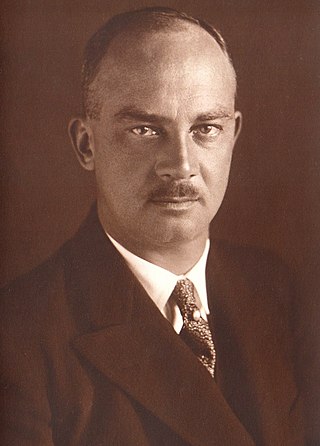
Ernest Augustus ; 17 November 1887 – 30 January 1953) was Duke of Brunswick from 2 November 1913 to 8 November 1918. He was a grandson of George V of Hanover, thus a Prince of Hanover and a Prince of the United Kingdom. He was also a maternal grandson of Christian IX of Denmark and the son-in-law of German Emperor Wilhelm II. The Prussians had deposed King George from the Hanoverian throne in 1866, but his marriage ended the decades-long feud between the Prussians and the Hanoverians.

Princess Thyra of Denmark was the youngest daughter and fifth child of Christian IX of Denmark and Louise of Hesse-Kassel. In 1878, she married Ernest Augustus, the exiled heir to the Kingdom of Hanover. As the Kingdom of Hanover had been annexed by Prussia in 1866, she spent most of her life in exile with her husband in Austria.
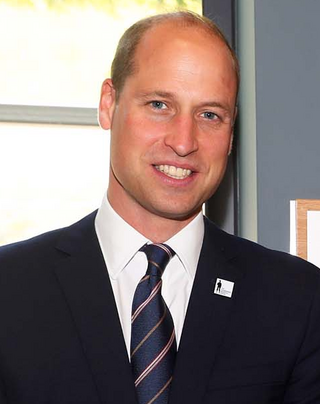
Prince of the United Kingdom of Great Britain and Northern Ireland is a royal title normally granted to sons and grandsons of reigning and past British monarchs, together with consorts of female monarchs. The title is granted by the reigning monarch, who is the fount of all honours, through the issuing of letters patent as an expression of the royal will.
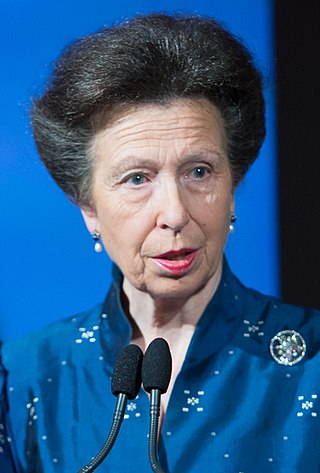
The use of the title of Princess of the United Kingdom of Great Britain and Northern Ireland is entirely at the will of the sovereign as expressed in letters patent. Individuals holding the title of princess are styled "Her Royal Highness" (HRH). On 18 April 1917, Frederica of Hanover, the newest granddaughter of Wilhelm II, German Emperor was styled a British princess from birth, even though Germany and Britain were fighting in WWI. Before the First World War, British princesses also held additional German titles, such as princesses of Hanover by virtue of being male line descendants of George III; or princesses of Saxe-Coburg and Gotha, duchess of Saxony, by virtue of being male line descendants of Prince Albert of Saxe-Coburg and Gotha. George V issued letters patent on 30 November 1917, to restrict the automatic assignment of the title "princess" and the use of the style "Royal Highness" to the following persons:

Ernst August, Hereditary Prince of Brunswick, Prince of Hanover was head of the House of Hanover from 1953 until his death in 1987. From his birth until the German Revolution of 1918–1919 he was the heir apparent to the Duchy of Brunswick, a state of the German Empire.

Charles II was ruler of the state of Mecklenburg-Strelitz from 1794 until his death. Originally ruling as duke, he was raised to the rank of grand duke in 1815. Prior to succeeding to the throne, he served as Governor of Hanover from 1776 to 1786.
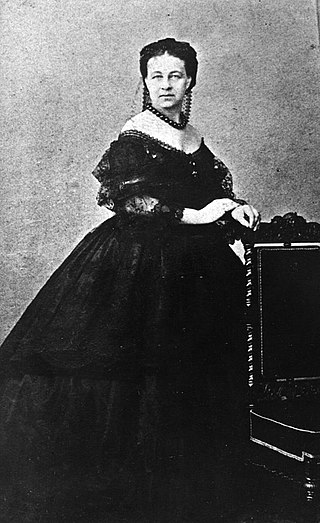
Marie of Saxe-Altenburg was Queen of Hanover as the wife of George V of Hanover, a grandson of George III of the United Kingdom and Queen Charlotte.
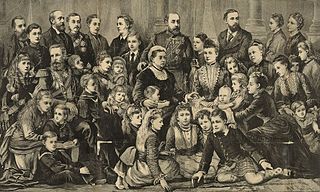
Queen Victoria, the British monarch from 1837 to 1901, and Prince Albert had 9 children, 42 grandchildren, and 87 great-grandchildren.

St George's Chapel at Windsor Castle in England is a castle chapel built in the late-medieval Perpendicular Gothic style. It is both a Royal Peculiar and the Chapel of the Order of the Garter. St George's Chapel was founded in the 14th century by King Edward III and extensively enlarged in the late 15th century. It is located in the Lower Ward of the castle. The castle has belonged to the monarchy for almost 1,000 years and was a principal residence of Elizabeth II before her death. The chapel has been the scene of many royal services, weddings and burials – in the 19th century, St George's Chapel and the nearby Frogmore Gardens superseded Westminster Abbey as the chosen burial place for the British royal family. The running of the chapel is the responsibility of the dean and Canons of Windsor who make up the College of Saint George. They are assisted by a clerk, verger and other staff. The Society of the Friends of St George's and Descendants of the Knights of the Garter, a registered charity, was established in 1931 to assist the college in maintaining the chapel.
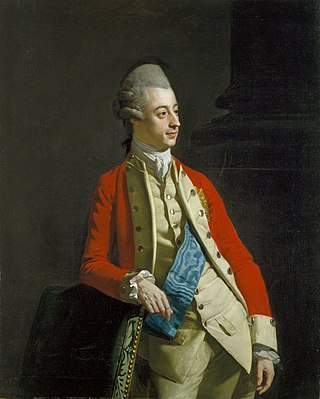
Duke Ernest Gottlob Albert of Mecklenburg was a member of the House of Mecklenburg-Strelitz. As a younger son of Duke Charles Louis Frederick of Mecklenburg, Ernest was an elder brother of Queen Charlotte of the United Kingdom, who married King George III in 1761. Ernest followed his sister to England, where he unsuccessfully pursued marriage with the country's largest heiress, Mary Eleanor Bowes.
Since William the Conqueror claimed the English throne, succession has been determined by bequest, battle, primogeniture, and parliament.




















